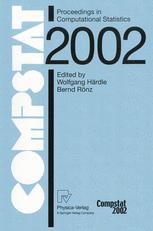

Most ebook files are in PDF format, so you can easily read them using various software such as Foxit Reader or directly on the Google Chrome browser.
Some ebook files are released by publishers in other formats such as .awz, .mobi, .epub, .fb2, etc. You may need to install specific software to read these formats on mobile/PC, such as Calibre.
Please read the tutorial at this link: https://ebookbell.com/faq
We offer FREE conversion to the popular formats you request; however, this may take some time. Therefore, right after payment, please email us, and we will try to provide the service as quickly as possible.
For some exceptional file formats or broken links (if any), please refrain from opening any disputes. Instead, email us first, and we will try to assist within a maximum of 6 hours.
EbookBell Team

5.0
78 reviewsThis COMPSTAT 2002 book contains the Keynote, Invited, and Full Contributed papers presented in Berlin, August 2002. A companion volume including Short Communications and Posters is published on CD. The COMPSTAT 2002 is the 15th conference in a serie of biannual conferences with the objective to present the latest developments in Computational Statistics and is taking place from August 24th to August 28th, 2002. Previous COMPSTATs were in Vienna (1974), Berlin (1976), Leiden (1978), Edinburgh (1980), Toulouse (1982), Pra~ue (1984), Rome (1986), Copenhagen (1988), Dubrovnik (1990), Neuchatel (1992), Vienna (1994), Barcelona (1996), Bris tol (1998) and Utrecht (2000). COMPSTAT 2002 is organised by CASE, Center of Applied Statistics and Eco nomics at Humboldt-Universitat zu Berlin in cooperation with F'reie Universitat Berlin and University of Potsdam. The topics of COMPSTAT include methodological applications, innovative soft ware and mathematical developments, especially in the following fields: statistical risk management, multivariate and robust analysis, Markov Chain Monte Carlo Methods, statistics of E-commerce, new strategies in teaching (Multimedia, In ternet), computerbased sampling/questionnaires, analysis of large databases (with emphasis on computing in memory), graphical tools for data analysis, classification and clustering, new statistical software and historical development of software.